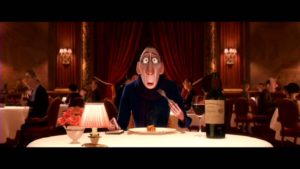 Our brain’s ability to store visual images in memory and more or less instantly compare them with new inputs for similarities and dissimilarities is impressive. Rather than deal with the many individual features each of these memories contain, we find it more efficient to stitch the bits together into patterns we can more readily utilize.
Our brain’s ability to store visual images in memory and more or less instantly compare them with new inputs for similarities and dissimilarities is impressive. Rather than deal with the many individual features each of these memories contain, we find it more efficient to stitch the bits together into patterns we can more readily utilize.
Recent research suggests that this is exactly what happens with sensations of taste and smell. In fact, the processing of taste and olfactory perceptions is so similar to those of sight and hearting that one neuroscientist refers to these composite inputs as flavor images.* Like visual images, they’re stored later use.
But it’s not just the tastes and smells that are filed away, it’s whatever else happens to be going on around us at the time: including what we we’re seeing and hearing, the company we’re in and whether we were feeling safe and happy or vulnerable and anxious. When a flavor image is retrieved, all these associated elements come along for the ride.
The most celebrated example of this is surely the one provided by French novelist Marcel Proust for whom “the whole village of Combray and its surroundings, taking shape and solidarity, sprang into being, town and gardens alike” as he nibbled the now famous tea-soaked madeleine.
Food critic Anton Ego’s nostalgia scene in the 2007 Pixar film Ratatouille makes the identical point in a scant, 45 exhilarating, animated seconds. One bite of confit bayaldi (a posher version of the homey dish that gave its name to the movie) and the lonely, self-absorbed critic, is vaulted back to his childhood kitchen. Click on the still image above to view the scene.
Professional wine tasters rely on their memories and pattern-recognition to make judgments about varietal character, winemaking technique, and conformity to a standard. Blank spaces are sketched in provisionally until something recognizable emerges. But, if tasting is a professional skill that can be learned and communicated, why don’t tasters of equal experience always agree? How is it they can be thrown off track when, as experiments have shown, wine is mislabeled, mispriced, or subjected to other misleading cues?
My guess is that they would agree more and be fooled less if we could bring up just the information and leave the affect behind. It just doesn’t seem to work that way. On the other hand, it’s worth noting that for Ego, his quick trip via confit bayaldi to his boyhood table doesn’t cloud or disable his critical faculties; It humanizes them.
I’ll confess to occasionally being dogged by the suspicion that it may have been circumstantial factors — food, company, mood, time of day — rather than something in the glass, that left me thrilled or disappointed with a wine. I now know better why. -Stephen Meuse
Taste, talk and learn about wine this weekend in the FKC wine corner . . .
THURSDAY, FEBRUARY 20 3-6 PM – ANOTHER BISCUIT, MARCEL?
2018 Quinta da Raza, Vinho Verde “Avesso” – $18.95
2016 André et Michel Quenard Chignin – $21.95
2017 Gulfi, Cerasuolo di Vittoria – $26.95
FRIDAY, FEBRUARY 21 3-6 PM – EGO TRIP
2016 Sikele, Terre Siciliane Grecanico – $19.95
2018 Famille Vaillant, Vin de France “Groslot,” $22.95
2015 Domaine des Soulanes, Côtes du Roussillon Villages “Cuvée Jean Pull” – $19.95
*The concept of the “flavor image” was first proposed by Dr. Gordon M. Shepherd of the Yale School of Medicine in his 2012 book Neurogastronomy: How the Brain Creates Flavor and Why It Matters.